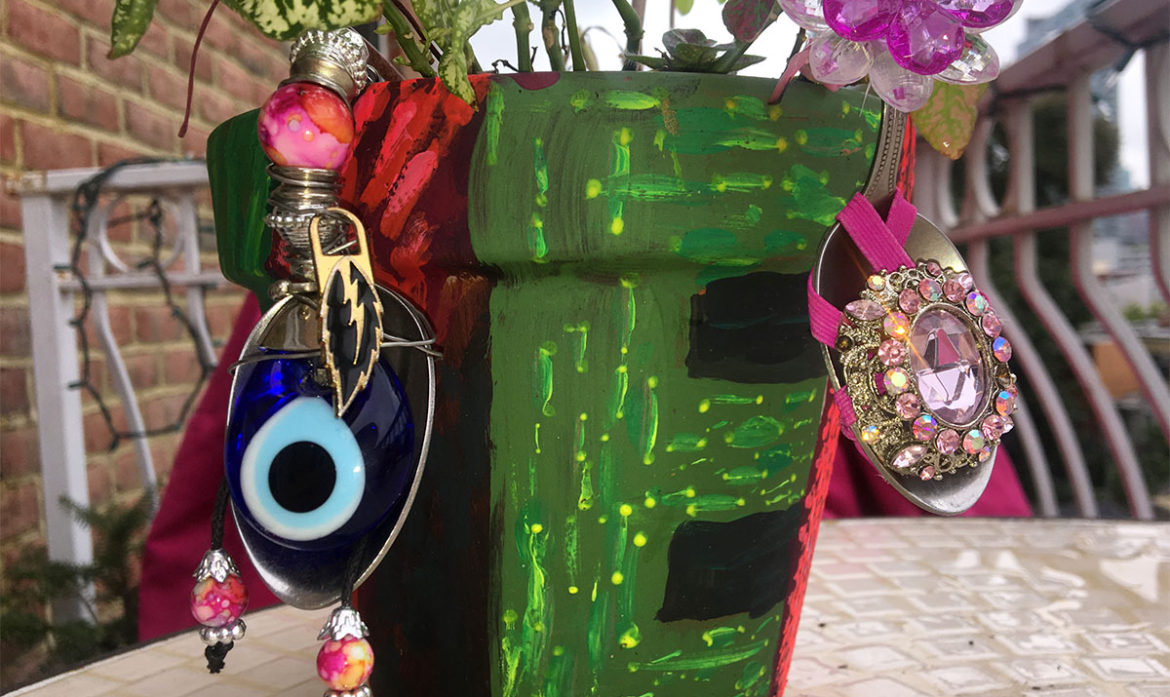An electronic plant communication device that’s also an eco-friendly fashionable bling
Welcome to Lab 4, featuring a continuation and refining of my lab 3 project. In lab 3 I was clumsily trying to build a plant communication device for my tropical pots.
Playing with a manufactured moisture sensor lead me to understand how unnecessary it is. Also, it was clearly designed by someone, or something, that doesn’t understand neither botanics nor aesthetics. All a moisture sensor does is lets us check if soil is moist enough by examining its conductivity. If there’s enough water in the soil, it’ll close the circuit. There’s no need for fancy gadgets to perform such simple functionality.
Following this article, I decided to replace the generic moisture sensor with an original one, built from house-held components: two identical spoons, bedazzled to perfection.
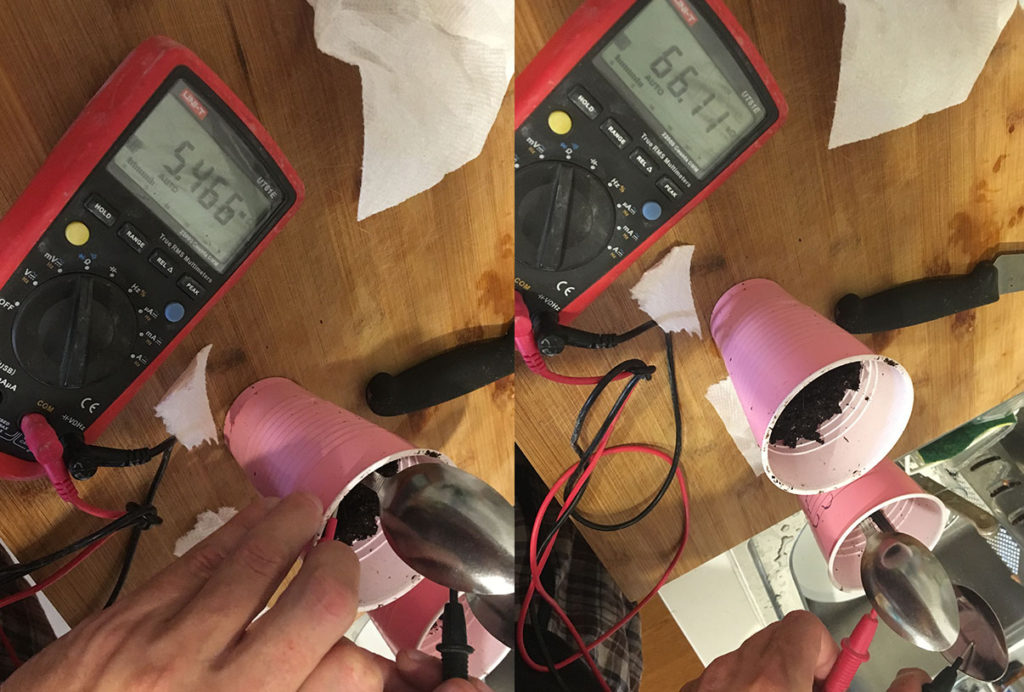
To verify the conjecture that spoons are sufficient conductor for a moisture sensor, I measured their conductivity with a multimeter in two containers: a dry and a moist one. There was significant difference in conductivity: the moist soil showed a conductivity of dozens microamperes, and the dry one only showed conductivity of several milliamperes.
The following step was connecting the spoons to a circuit with a micro controller in order to measure it’s digital input.
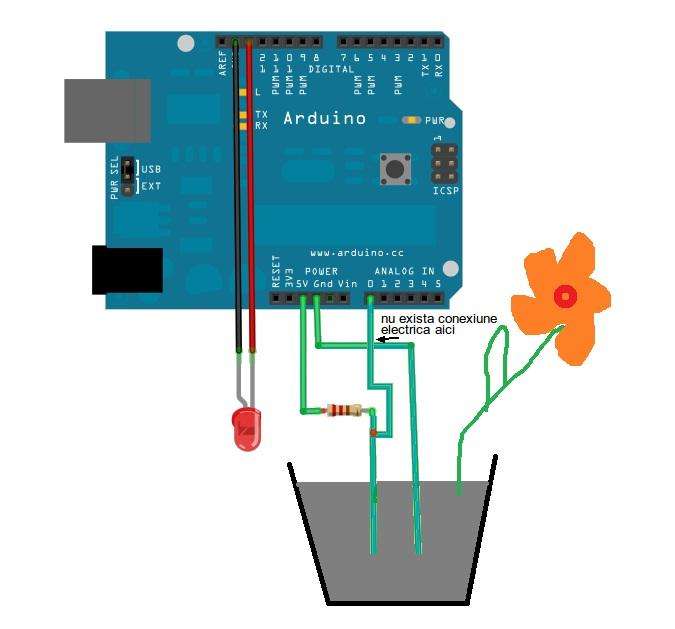
Dry soil provided values of ~30-50 and moist soil provided values of ~210-250
A simple code was then assigned to the circuit: turn the monitor on when the soil is dry, under a threshold of 100, and off when the soil is moist, over 100.
void setup() {
// put your setup code here, to run once:
Serial.begin(115200);
pinMode(13, OUTPUT);
}
void loop() {
// put your main code here, to run repeatedly:
auto moisture_level = analogRead(4);
Serial.println(moisture_level );
digitalWrite(13, moisture_level > 100);
}
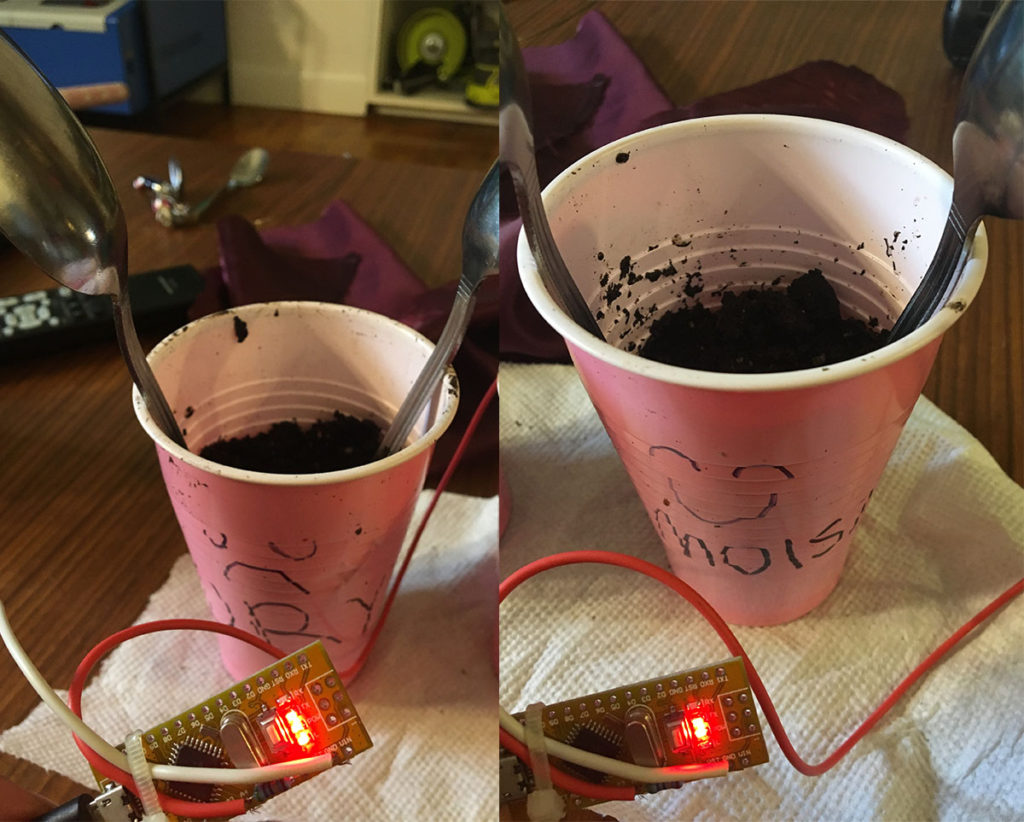
A trial test round with the actual flower pots worked as well.
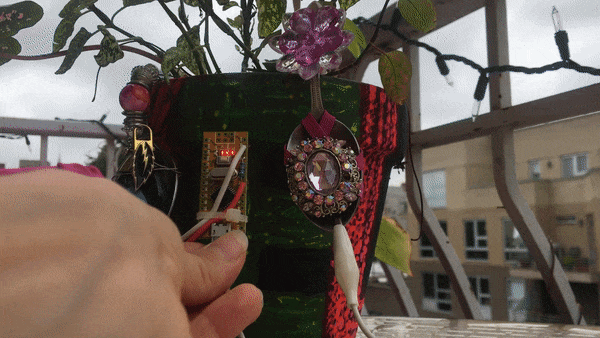
The quirky design of my indie moisture-sensor isn’t just
an eco-friendly upcycled eye-candy.
It’s stainless, sturdier and better suited for moist environments
than the generic moisture-sensor.
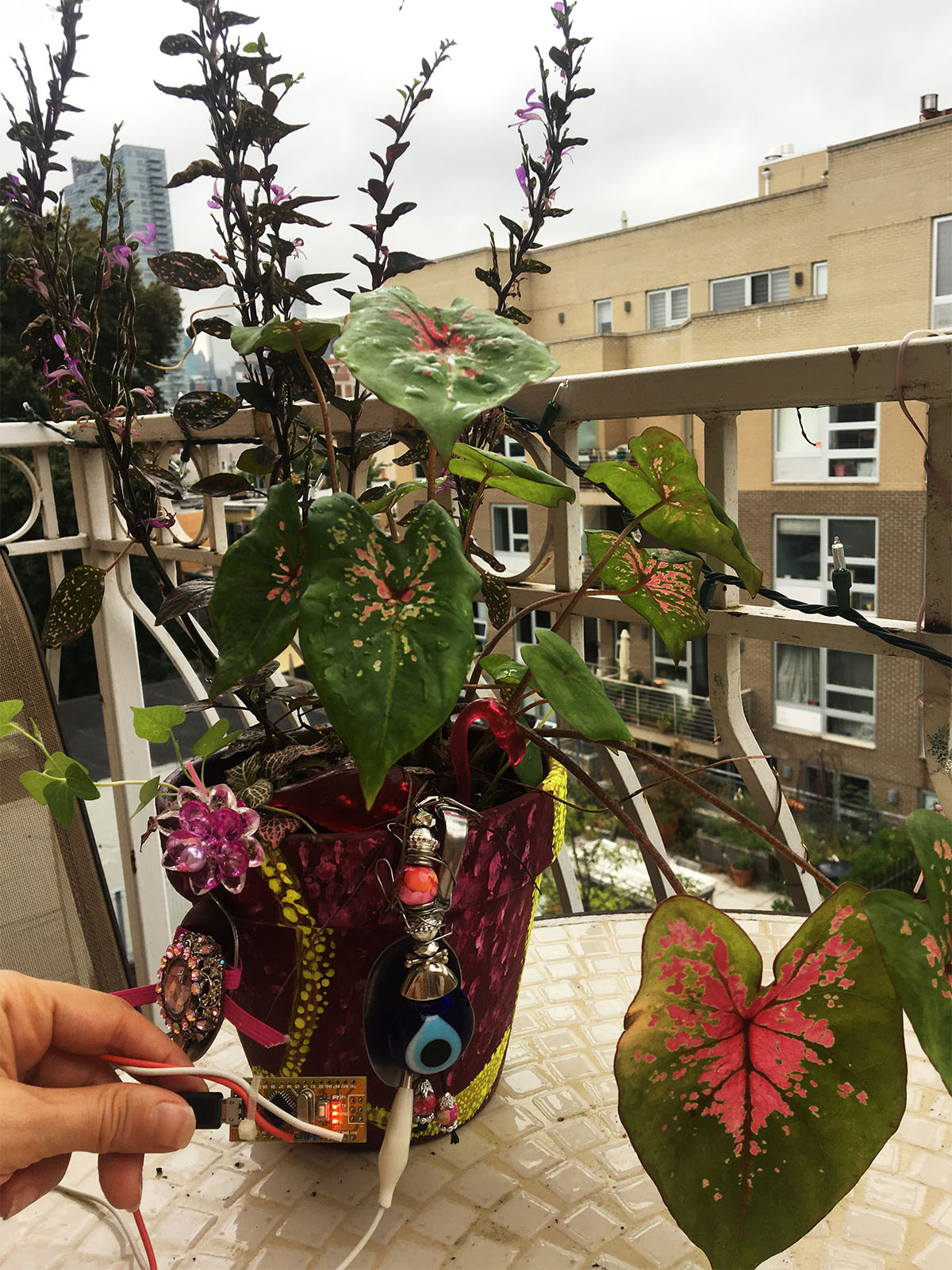
Next and final step is putting the entire system together;
Assigning the audio-visual signal as an output instead the Arduino’s built-in LED.

